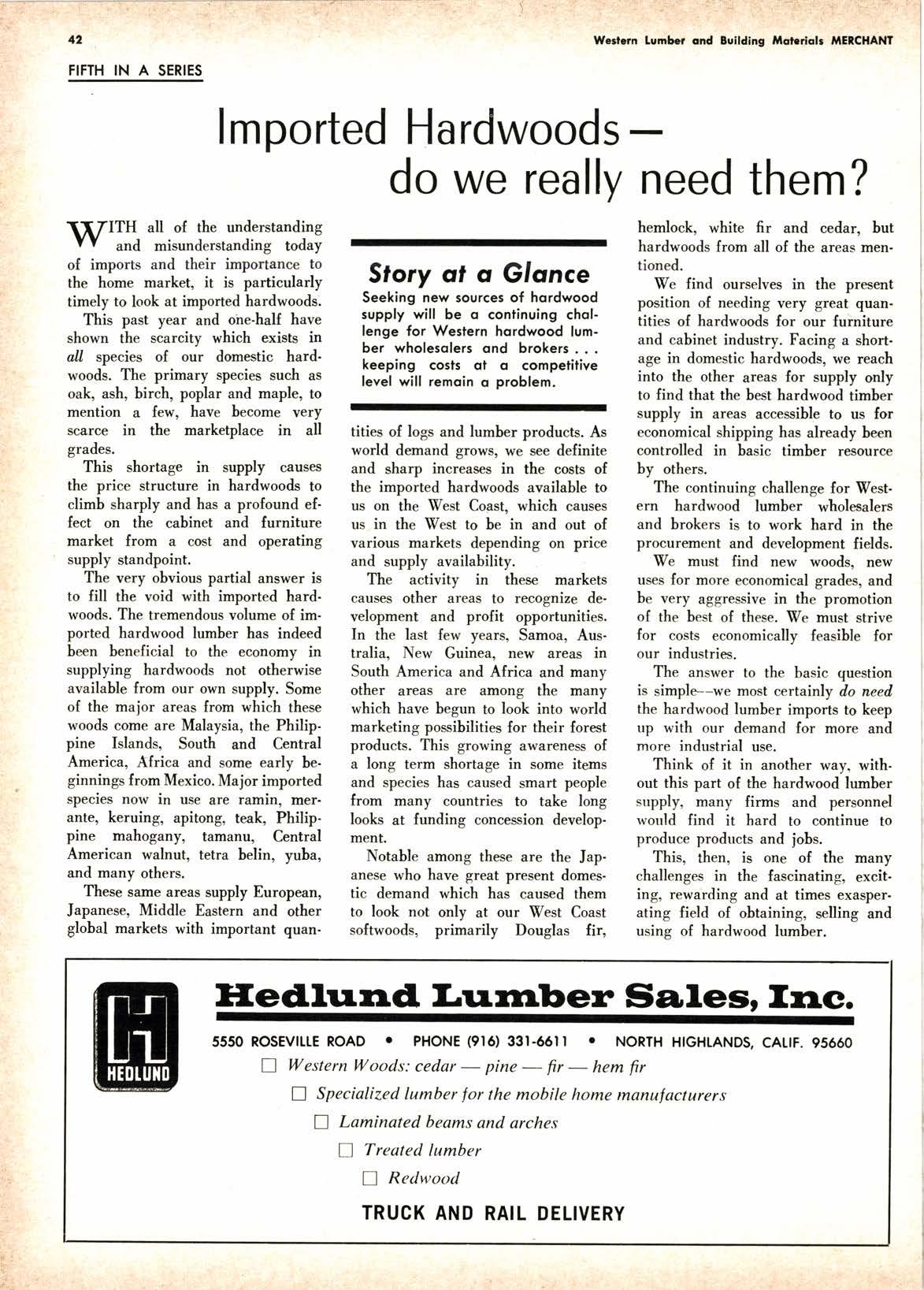
2 minute read
lmported Hardwoods -
do we really need them?
\XZITH all of the understanding
Y Y and misunderstanding today of imports and their importance to the home market, it is particularly timely to look at imported hardwoods.
This past year and ohe-half have shown the searcity which exists in alJ species of our domestic hardwoods. The primary species such as oak, ash, birch, poplar and maple, to mention a few, have become very scarce in the markeplace in all grades.
This shortage in supply causes the price structure in hardwoods to climb sharply and has a profound effect on the cabinet and furniture market from a coot and operating supply standpoint.
The very obvious partial answer is to fill the void with imported hardwoods. The tremendous volume of imported hardwood lumber has indeed been beneficial to the economy in supplying hardwoods not otherwise available from our own supply. Some of the major areas from which these woods come are Malaysia, the Philippine lslands, South and Central America, Africa and some early beginnings from Mexico. Major imported species norv in use are ramin, mer. ante, keruing, apitong, teak, Philippine mahogany, tamanu, Central American walnut, tetra belin, yuba, and many others.
These same areas supply European, fapanese, Middle Eastern and other global markets with important quan-
Story ol s Glonce
Seeking new sources of hqrdwood supply will be o continuing chollenge for Western hordwood lumber wholesolers ond brokers keeping costs ol o compelitive level will remoin o problem.
tities of logs and lumber products. As world demand grows, we see definite and sharp increases in the costs of the imported hardwoods available to us on the West Coast, which causes us in the West to be in and out of various markets depending on price and supply availability.
The activity in these markets causes other areas to recognize development and profit opportunities. In the last few years, Samoa, Australia, New Guinea, new areas in South America and Africa and many other areas are among the many which have begun to look into world marketing possibilities for their forest products. This growing awareness. of a long term shortage in some items and species has caused smart people from many countries to take long looks at funding concession development.
Notable among these are the Japanese who have great present domestic demand which has caused them to look not only at our West Coast softwoods, primarily Douglas fir, hemlocko white fir and cedar, but hardwoods from all of the areas men. tioned.
We find ourselves in the present position of needing very great quan. tities of hardwoods for our furniture and cabinet industry. Facing a short. age in domestic hardwoods, we reach into the other areas for supply only to find that the best hardwood timber supply in areas accessible to us for economical shipping has already been controlled in basic timber resource by others.
The continuing challenge for West. ern hardwood lumber wholesalers and brokers is to work hard in the procurernent and development fields. We must find new woods, new uses for more economical grades, and be very aggressive in the promotion of the best of these. W'e must strive for costs economically feasible for our industries.
The answer to the basic question is simple--we most certainly d,o need, the hardwood lumber imports to keep up with our demand for more and more industrial use.
Think of it in another wav. without this part of the hardwood lumber supply, many firms and personnel would find it hard to continue to produce products and iobs.
This, then, is one of the many challenges in the fascinating, exciting, rewarding and at times exasperating field of obtaining, selling and using of hardwood lumber.










